SLVSDK7C April 2017 – February 2020 TPS22971
PRODUCTION DATA.
- 1 Features
- 2 Applications
- 3 Description
- 4 Revision History
- 5 Pin Configuration and Functions
- 6 Specifications
- 7 Parameter Measurement Information
- 8 Detailed Description
- 9 Application and Implementation
- 10Power Supply Recommendations
- 11Layout
- 12Device and Documentation Support
- 13Mechanical, Packaging, and Orderable Information
6.8 Typical AC Characteristics
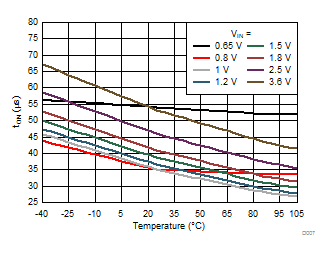 Figure 5. Turn-On Time vs Temperature
Figure 5. Turn-On Time vs Temperature 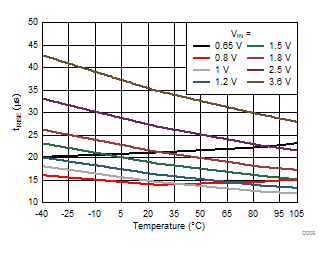 Figure 7. Rise Time vs Temperature
Figure 7. Rise Time vs Temperature 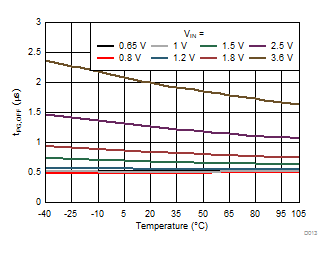 Figure 9. PG Turn-Off Time vs Temperature
Figure 9. PG Turn-Off Time vs Temperature 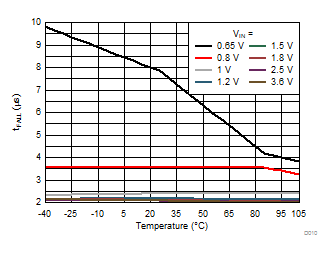
| RL = 10 Ω | CL = 0.1 μF |
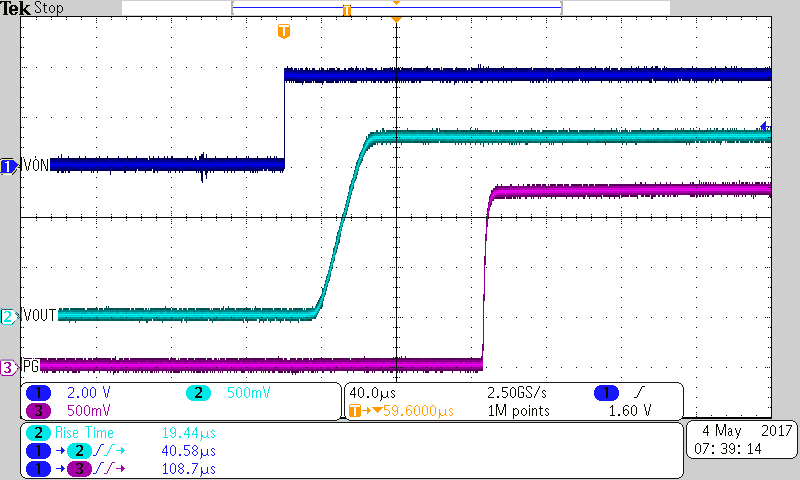
| RL = 10 Ω | CT = 0 pF |
| TA = 25°C | CL = 0.1 µF |
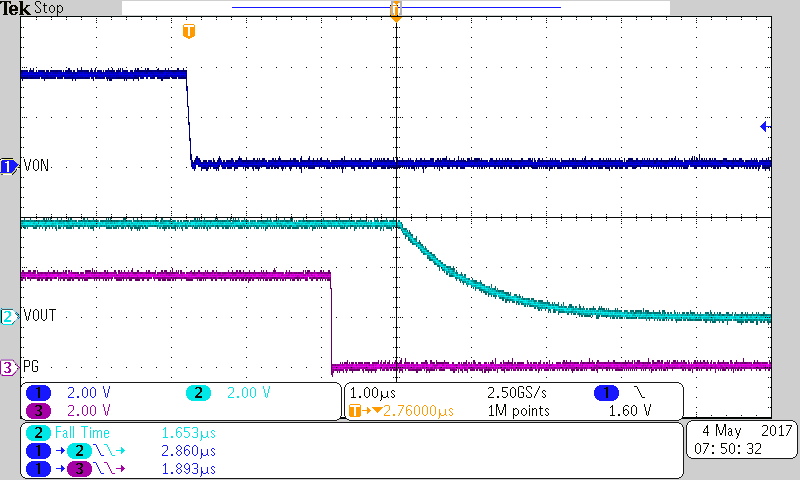
| RL = 10 Ω | CT = 0 pF |
| TA = 25°C | CL = 0.1 µF |
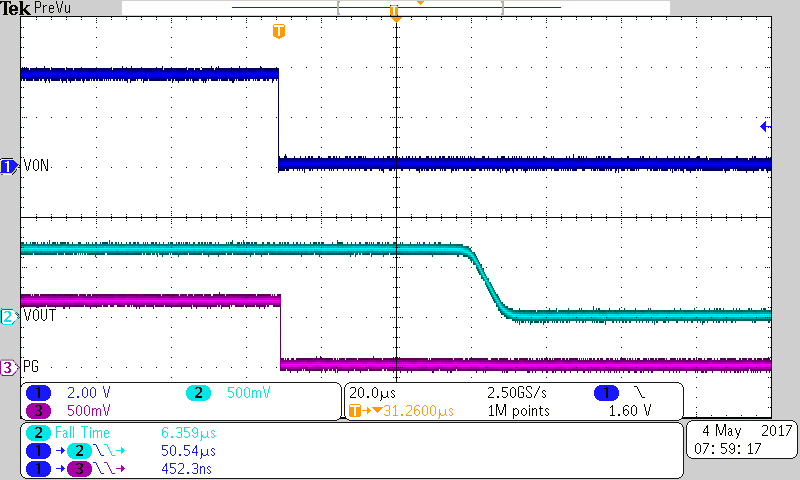
| RL = 10 Ω | CIN = 0 pF |
| TA = 25°C | CL = 0.1 µF |
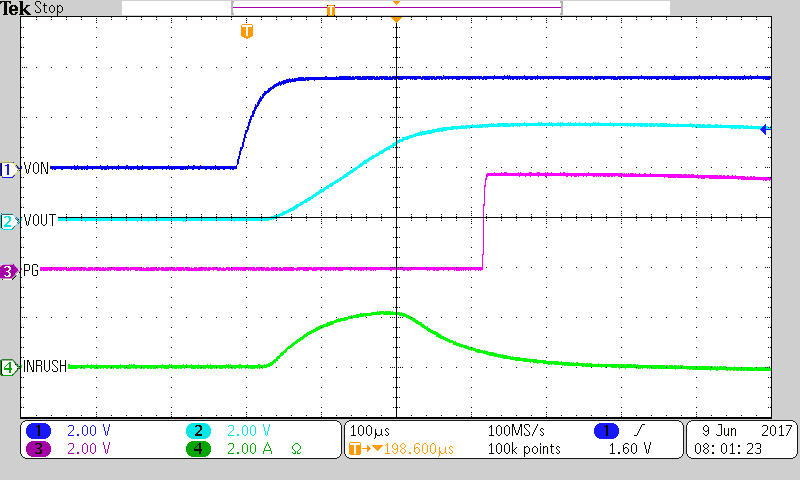
| CT = 1000 pF | CL = 133 µF |
| RL = OPEN | TA = 25°C |
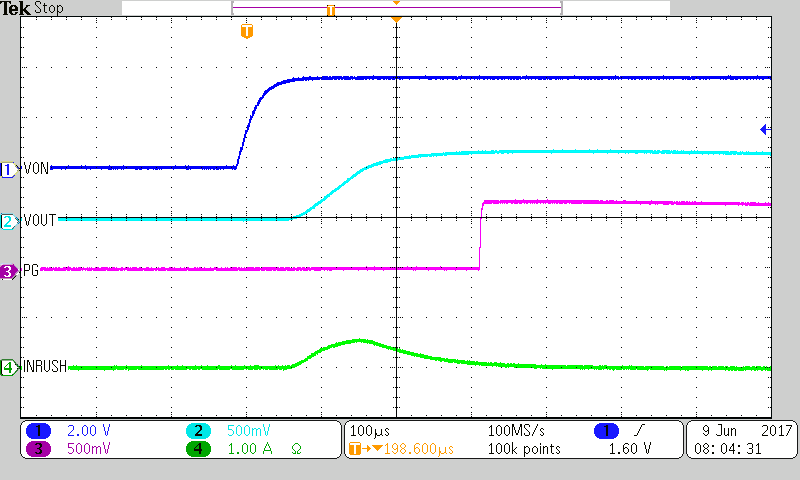
| CT = 1000 pF | CL = 133 µF |
| RL = OPEN | TA = 25°C |
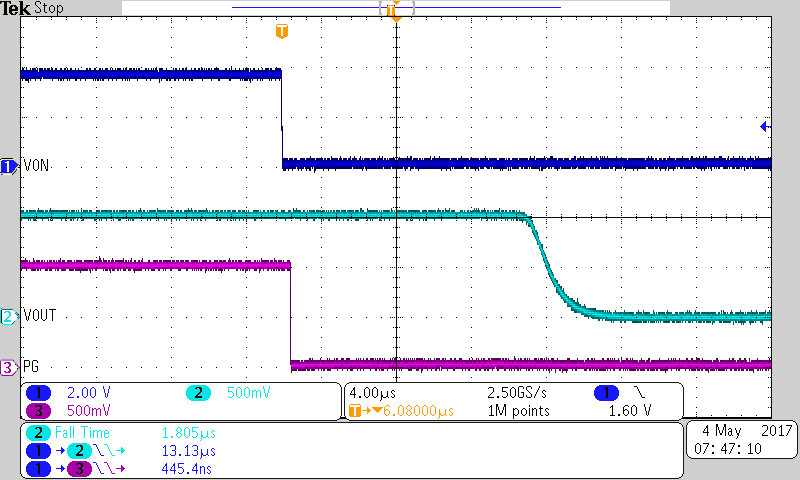
| CIN = 0 pF | CL = 0.1 µF |
| RL = 10 Ω | TA = 25°C |
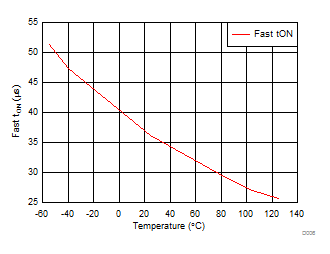
| VIN = 1V | CT = 0 pF | CL = 0.1 µF | RL = 10 Ω |
 Figure 8. PG Turn-On Time vs Temperature
Figure 8. PG Turn-On Time vs Temperature 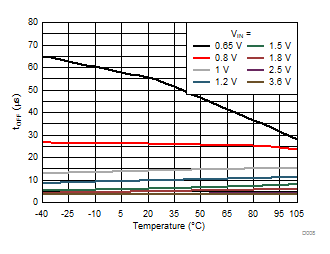 Figure 10. Turn-Off Time vs Temperature
Figure 10. Turn-Off Time vs Temperature 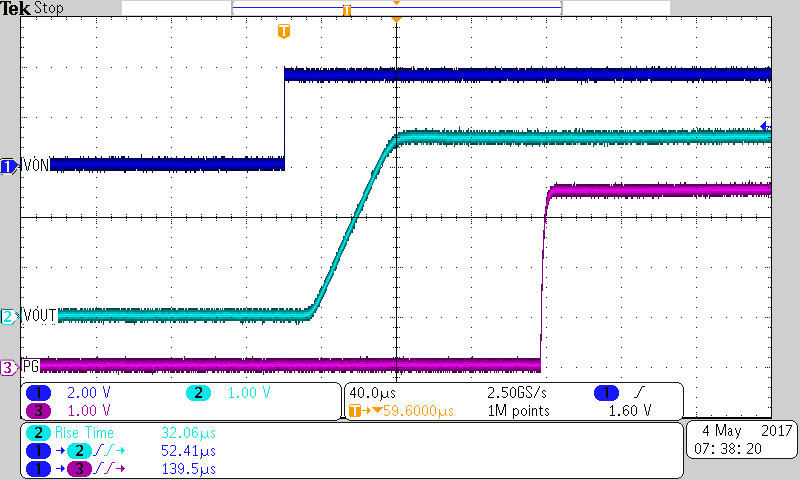
| RL = 10 Ω | CT = 0 pF |
| TA = 25°C | CL = 0.1 µF |
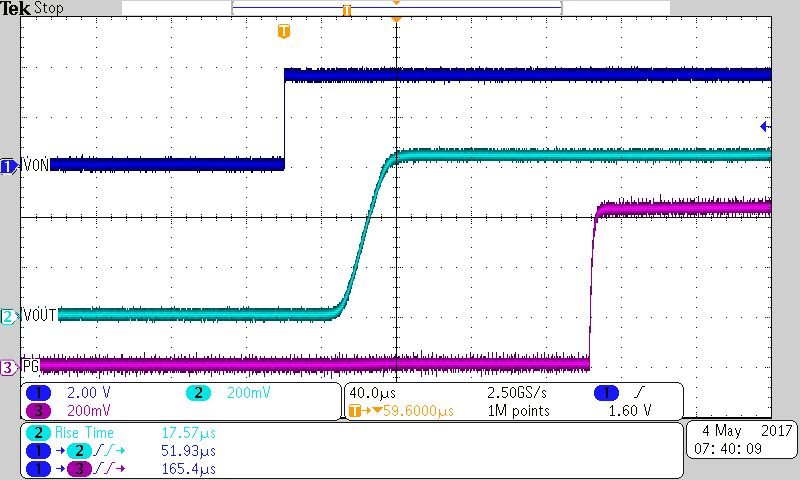
| RL = 10 Ω | CT = 0 pF |
| TA = 25°C | CL = 0.1 µF |
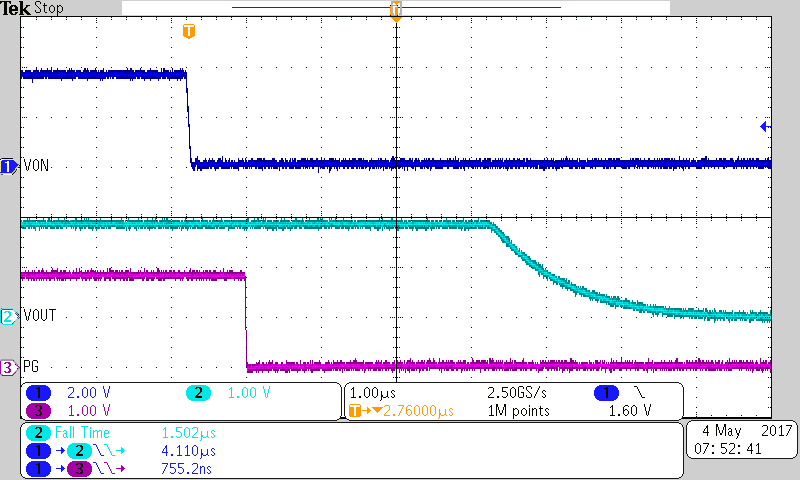
| RL = 10 Ω | CT = 0 pF |
| TA = 25°C | CL = 0.1 µF |
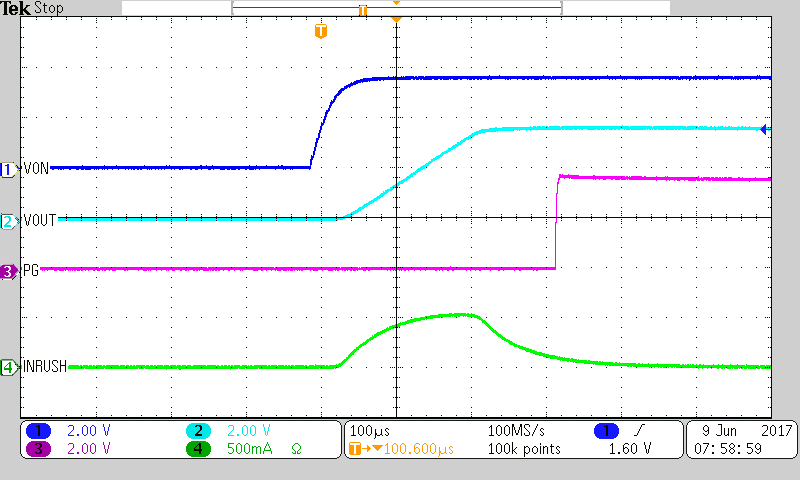
| CT = 1000 pF | CL = 33 µF |
| RL = OPEN | TA = 25°C |
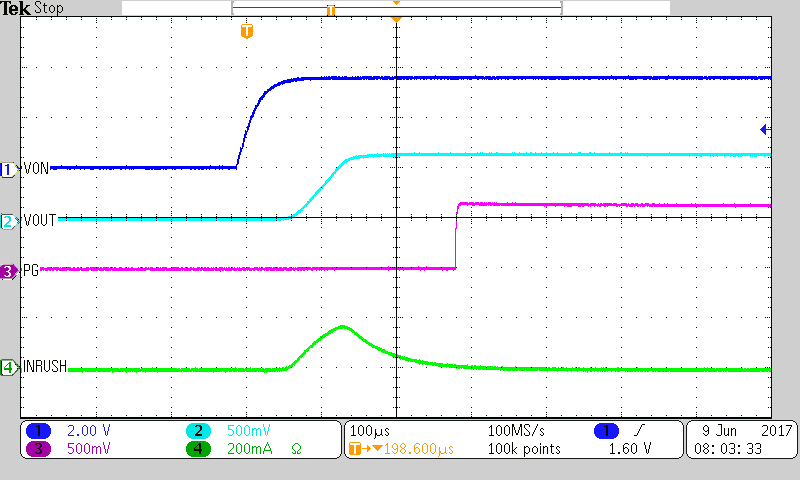
| CT = 1000 pF | CL = 33 µF |
| RL = OPEN | TA = 25°C |
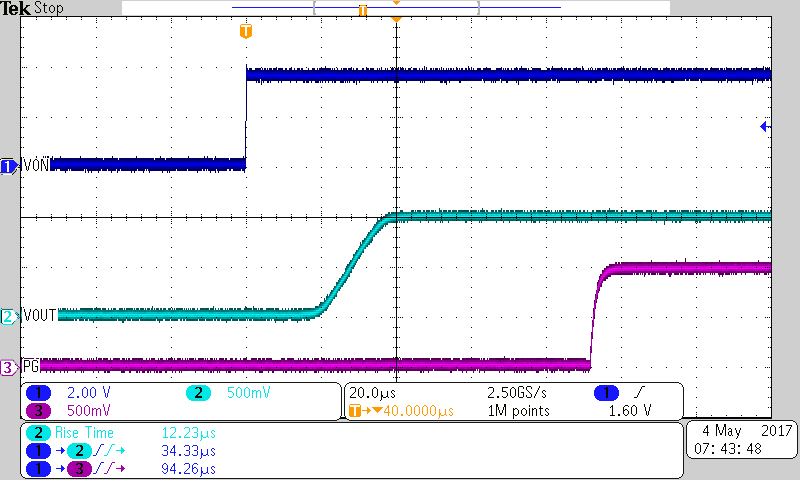
| CT = 0 pF | CL = 0.1 µF |
| RL = 10 Ω | TA = 25°C |